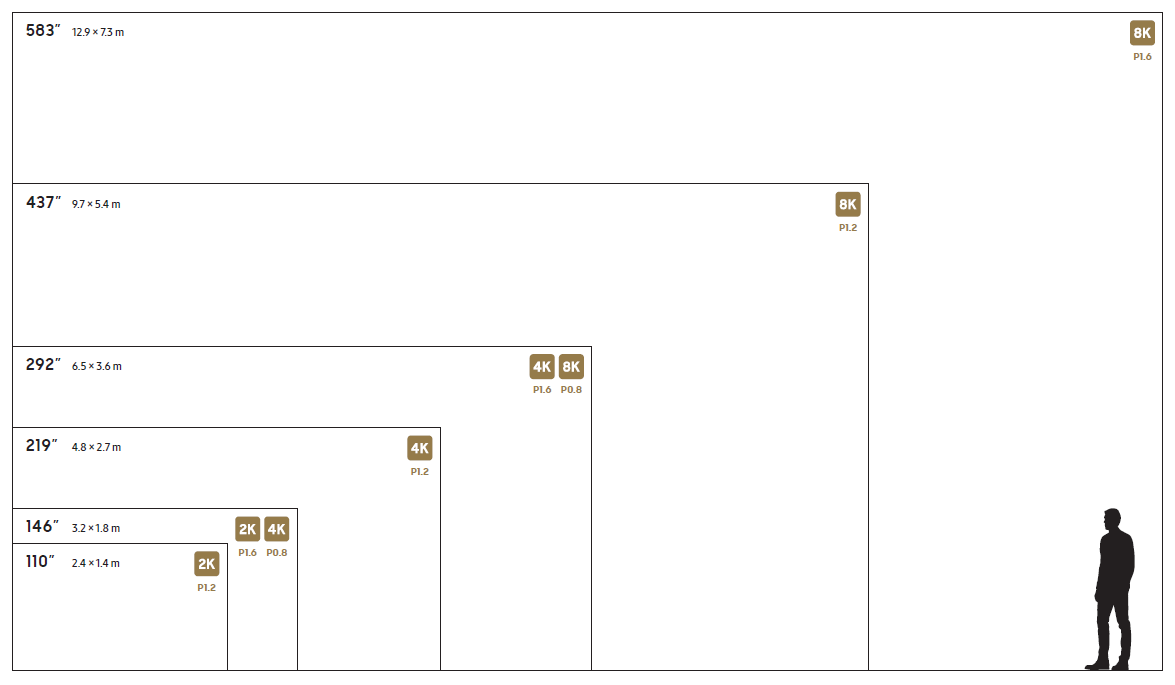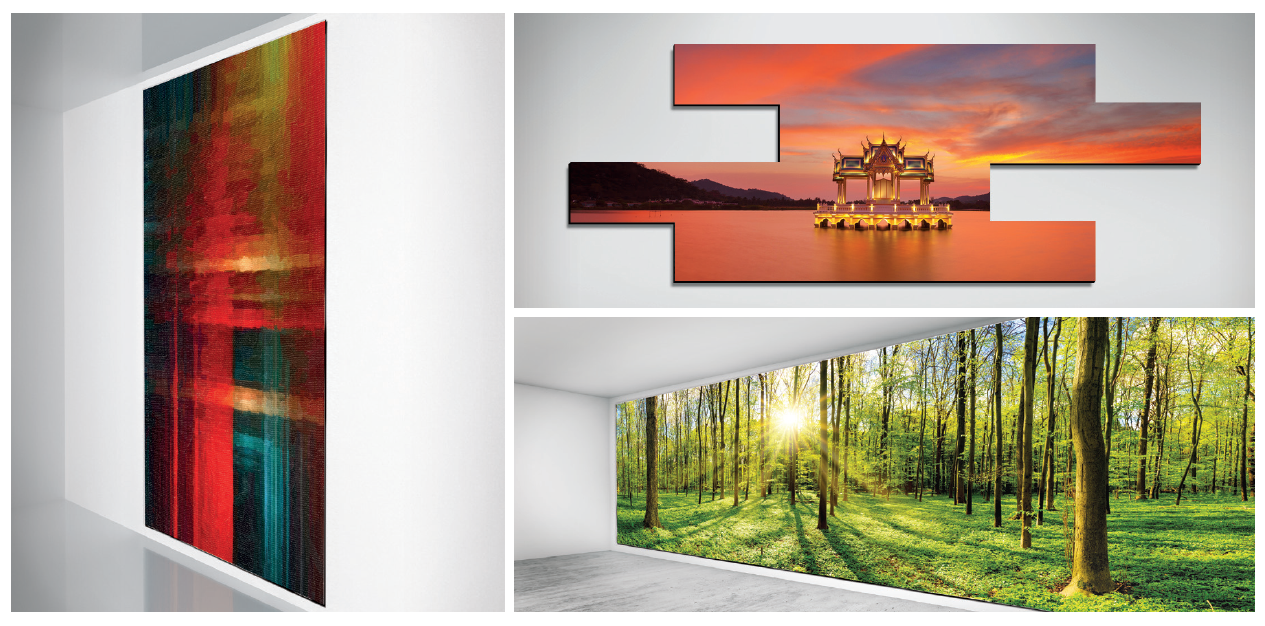The New Wall
To that end Samsung will soon be introducing the next level in its Micro-LED “The Wall” product line, which will shrink pixel spacing further and therefore pack more pixels in each ‘cabinet’ from which these massive displays are made. The cabinets, which are essentially interconnected building blocks, weigh ~27 lbs, are roughly 36” long by 20” long and about 3” deep, and can be configured anyway the customer should desire, but most important to us is the pixel pitch, which is the distance between each pixel. In very large displays such as these, the viewer is a distance away from the screen (recommended viewing distance for an 85” 4K display is 5.25’) and cannot see individual pixels, but as the resolution of TVs moves higher, the user can get closer without the image being broken up into ‘dots’. With each new resolution iteration come more pixels and more electronics and more difficulties in producing and placing these progressively smaller Micro-LEDs, so as Samsung and others reduce the pixel pitch, we watch to see if they can hold or lower costs.
While it might not sound like a big change, the increase from earlier models is ~7x in the same cabinet space, and while that is still 1/9 the resolution of a 4K TV, typical user distances from such displays are considerably greater than would be the case for retail TV viewing, so such high resolutions are not as necessary, although the goal is to continually shrink the pixel size and pixel pitch with each new model. Price for the new model has yet to be announced, so we cannot yet track improvements in production methods and other costs, but while “The Wall” seems to be an expensive commercial product or a rich man’s toy, it is a proving ground for Micro-LED technology and helps to establish a timeline where Micro-LED technology will become competitive with other display modalities. As higher resolution displays do not come without a ‘cost’, we include the power consumption of each as it increases as the number of LEDs increases.



 RSS Feed
RSS Feed